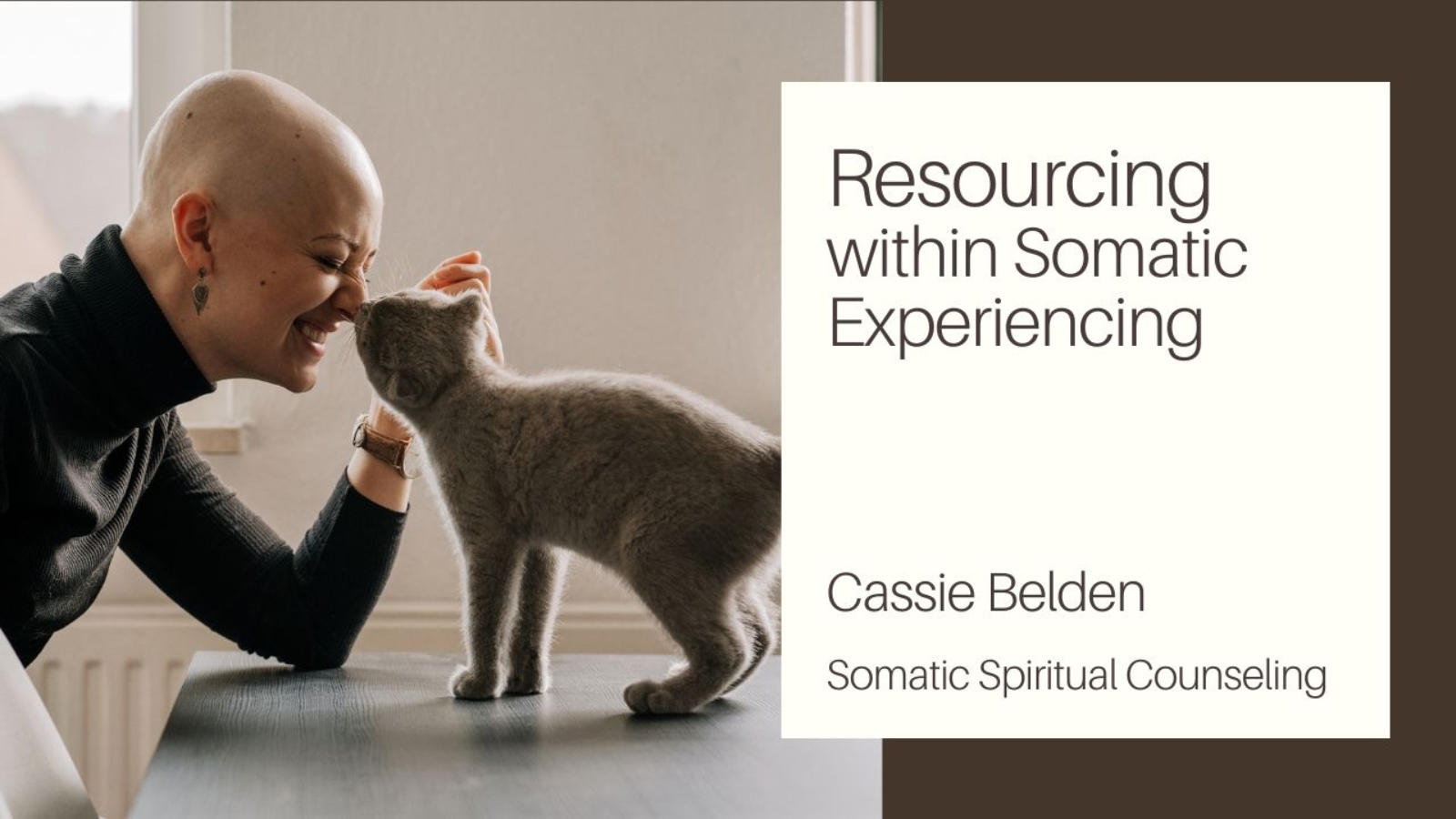In this video, we explore the concept of resourcing within Somatic Experiencing, as explained by Cassie Belden, a somatic coach. Resourcing involves finding things that support us to feel present, grounded, and safe, which can be especially helpful when delving into trauma. SIBAM, which stands for sensation, image, behavior, affect, and meaning, is a helpful framework to track resources.
Cassie takes us through each of these channels and provides examples of how we can use them to identify and cultivate resources. By the end of this video, you will have a better understanding of the importance of resourcing and how it can help regulate your nervous system and transform trauma.
Transcript
Hi, my name is Cassie, with Somatic Spiritual Counseling. And I’m here to talk to you about resourcing within Somatic Experiencing.
Resourcing is a lot what it sounds like: it’s finding the things that support us in feeling more present, more grounded, safer. You might also think of it as an anchor – something to pull you back away and out of the trauma vortex. Because as we delve into trauma, which we sometimes need to in order to heal it, it can be really helpful to have something that feels different from the trauma. And one way that we track these resources within Somatic Experiencing is through these five channels that we call SIBAM — sensation, image, meaning, behavior, and affect. Think I said them out of order, but those are the five.
So let’s start with sensation and imagine what some resources could be. And actually, first I want to say that while resources might often feel pleasurable, comfortable, supportive, grounding, positive in some way, sometimes they’re neutral, because neutral can be a lot better than whatever the trauma is, whatever the difficult emotion or sensation or feeling or memory is. Neutral can also be good, can also be a resource.
So starting with sensation, I want to invite you to notice what’s present in your body right now. You might take a deep breath. Notice if your eyes want to be open or closed. Just take a moment to scan for something that maybe might feel like a resource. Somewhere that might feel open or supported, grounded, warm. Or, again, maybe just neutral, especially if you’re someone who has a lot of pain, or a lot of difficulty with the body, you might just notice a sensation of not much is happening. And that might feel like a resource. So taking some time, some breaths to just locate a place in your body, or a sensation that you notice. That could be a resource.
For me right now I’m feeling my seat on this cushion, and it feels very solid, supported. I’m feeling the length in my spine, and the coolness of the air on my skin. All of those things feel quite nice to me right now.
Let’s move to image. Image is cool because it might be something that you’re seeing in the world around you. For example, all the green around me feels very supportive. It might also be something that you’re seeing in your mind’s eye. So you might imagine a place or a person, a time in your life that you know is supportive to you. And you can really let yourself recall the details, the time of day, if anyone else was around. Maybe even weaving in that sensation of what do you notice as you recall this memory, this image.
Next, initial is B for behavior. And behavior is what’s happening in the body pretty much without our conscious attention. So it might be that our shoulders drop. It might be that suddenly a deeper breath comes in. And oftentimes that’s where the practitioner can help with reflection, like, “Hey, I just noticed that your shoulder dropped. Did you notice that? Oh, yeah. That’s nice.” And really savoring that. Sometimes our behavior can be a resource in another way, you know, sometimes getting angry and feeling the energy of that. That can actually be a resource to noticing that your body is doing what you need it to do, to be in line with what you’re feeling and needing from it.
Some that might be more of one to ponder, you can notice if your body is doing anything in this moment that does feel resourceful.
And then our next initial is A for affect. This is emotion. And the resourcing thing about emotion can again be when it’s in line with what our nervous system is feeling or doing. So again, anger can be a resource, if that’s what we need for our vital life force to come through. We also might deepen into emotions that do feel inherently resourceful, like joy and connection. So you might just notice for a moment if you have any emotion present, particularly if there’s something that does feel resourceful, and your emotional fields, maybe something you’re grateful for, something you’re feeling connected to.
And then the last initial is M for meaning. And again, this is something that your practitioner might be able to help you with, but also introspective activities, like journaling, can be useful, or just self-reflection. Meaning is drawing purpose from all these other things that we’re noticing. So it might show you what your purpose is in the world, why you experience something that you did. Creating meaning out of our experiences can be a really resourceful way of transforming trauma.
So that’s SIBAM. A quick overview, a little embodied experience, you again might notice in your body, and your breath, and your image channel, if anything about this moment feels resourceful to you. And remember that on your own or with a practitioner, these resources are available for you to come back to, to get grounded in and to support your process.
That’s it for now. Thanks for hanging in with me. Take care.
If you are looking for further learning on resourcing, we recommend Peter Levine’s book Waking the Tiger.




